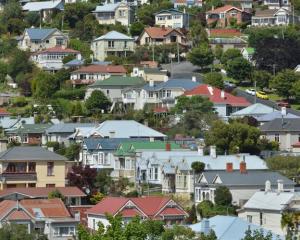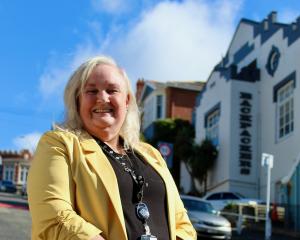Houses in the resort have some of the highest annual power usage and reported home-related sickness levels in the country, says Paula Hugens, a consulting engineer for Queenstown's Green Being, a consultation company specialising in green building and environmentally sustainable design.
She first publicly raised the concerns in an industry presentation in June last year, and last week said few homes assessed by the company did not have at least minor problems with insulation, which translated into big power bills and unhealthy living conditions.
"We are living in an environment that's too cold, too wet, and these are areas that are great for developing mould and asthma problems."
The 2008 New Zealand Housing Survey found the Queenstown Lakes district was fourth highest for homes reported to be causing health problems, 59% of people responding that their home did cause problems, 37% that theirs did not, and 4% who were not sure.
The national average for problem houses was only 26%.
The only places with a higher percentage of health problems caused by homes were the Opotiki, Otorohonga and Waitomo districts.
Ms Hugens said the statistic was surprising considering the Queenstown Lakes District was "quite well-heeled" compared with the other poorly performing districts.
However, Ms Hugens said the district had many holiday homes which originally would have been intended for summer use but were now used throughout the winter, too.
"Certainly, anything that's 1970s and earlier, there's that chance that there's very little insulation."
In June last year, she modelled the average annual energy use of a Wakatipu home and found that compared with the national average usage of 11,410 kilowatt hours, a yearly energy use of 20,000kWh to 40,000kWh per year was not uncommon in the Wakatipu.
"If you want to be heating your house, you actually have to heat the whole house to above 18degC, and that's just not affordable for many people."
The building code's minimum requirement for insulation in new buildings is determined over three New Zealand climate zones, the local zone being zone three, which covers the entire South Island and the Central Plateau of the North Island.
Ms Hugens said it did not make sense that Wakatipu homes should only require the same amount of insulation as Nelson homes when the district was "staggeringly colder" and required much greater insulation.
"When I was doing consultation, I realised that if my house was in Nelson, my house would only use half the energy that it does here," she said.
Aside from insulation subsidies available through the Energy Efficiency and Conservation Authority, the Queenstown Lakes District Council has no projects aimed at insulation, although Arrowtown residents are eligible for clean heating and insulation subsidies through the Otago Regional Council.
ORC regional services group manager Jeff Donaldson said there was a 60% community services subsidy and a 33% general income subsidy for up to $1300 spent to help bring insulation in Arrowtown homes up to building code standards by mid-2012.
The subsidies are made available through contributions from the Community Trust of Otago, the Central Lakes Trust, Aurora Energy and the Arrowtown Clean Heat Trust.
Mr Donaldson said the building code's insulation requirements were "sufficient" for the climate, but there were many other things to take into account, such as large expanses of windows, shade, and the direction Wakatipu houses faced.
Advertisement










